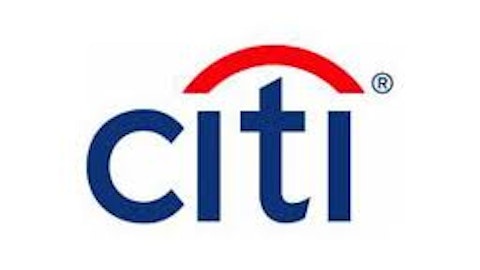3. The Housing Rebound
.jpg) A quick snapshot of housing stocks gives the impression that sales of new and used homes are expected to steadily rise over the next few years.
A quick snapshot of housing stocks gives the impression that sales of new and used homes are expected to steadily rise over the next few years.
Indeed, a falling unemployment rate and a wind down of the foreclosure crisis are key factors behind a housing rally. And even if mortgage rates rise higher, the housing affordability index should remain above 140, which is typically a positive level for home buying.
Wells Fargo & Co (NYSE:WFC), Bank of America Corp (NYSE:BAC) and JPMorgan Chase & Co. (NYSE:JPM) are the nation’s top three mortgage issuers, and they have the most leverage to a housing recovery.
But will the housing market post a robust rebound, as many anticipate? That question will be answered in the next two quarters, when we find out whether the U.S. economy is getting stronger, pushing up employment rates and consumer confidence, or whether it will stall out in the face of a slowing global economy.
4. Global Exposure
 The most remarkable aspect of the recently reported earnings reports is how events in Europe, China and elsewhere appears to be having little negative impact on U.S. banks. To be sure, these banks have not only reduced their foreign exposure, especially in Europe, but have also deployed betterhedging strategies to mitigate currency risk and other dynamics.
The most remarkable aspect of the recently reported earnings reports is how events in Europe, China and elsewhere appears to be having little negative impact on U.S. banks. To be sure, these banks have not only reduced their foreign exposure, especially in Europe, but have also deployed betterhedging strategies to mitigate currency risk and other dynamics.
Yet the operations of big banks are still closely affiliated with trends underway at Fortune 500 companies, many of which have huge global footprints. More to the point, if Europe hits another crisis point, there’s no way that bank stocks would remain unaffected. Banks have surely benefited from a benign global backdrop in recent quarters, but real risks remain and need to be monitored if you own bank stocks.
5. Tighter Regulatory Pressures
 The Federal Reserve intends to impose tighter capital restrictions on banks, including a requirement that these banks set aside more capital to prevent another crisis like the one we saw in 2008 and 2009. The banking industry is none too pleased about the Fed’s proposals, and Congress, which counts on the banks as their top source of campaign funds, my push back against the Fed.
The Federal Reserve intends to impose tighter capital restrictions on banks, including a requirement that these banks set aside more capital to prevent another crisis like the one we saw in 2008 and 2009. The banking industry is none too pleased about the Fed’s proposals, and Congress, which counts on the banks as their top source of campaign funds, my push back against the Fed.
Yet investors shouldn’t see such legislation as a red flag. According to Merrill Lynch analysts, “The adoption of the new leverage standard would likely cause some banks to reduce off-balance-sheet exposures.” Although, they add that almost all of the major banks (with the exception of Morgan Stanley (NYSE:MS) and The Bank of New York Mellon Corporation (NYSE:BK)) could meet tightening capital requirements without the need to cut their dividends or alter their lending practices.
Risks to Consider: While a fresh European crisis has loomed in the past as the greatest threat to these banks, the vigor of the U.S. economic recovery stands as the greatest potential impediment.
Action to Take –> Tally up the headwinds and tailwinds, and a case can be made for a further rally in bank stocks — assuming the U.S. employment and housing market trends continue in a positive fashion. Yet considering how far these stocks have already risen in the past few years, it’s unwise to expect robust gains in the quarters ahead. Indeed, the recent rally appears to reflect the good times still to come, and the wise course may be to lock in gains and wade back in after the next solid pullback with this group.
Warren Buffett’s Top 5 Stocks
Buffett’s firm, Berkshire Hathaway, holds dozens of stocks. But these five make up 75% of its portfolio… worth $65 billion. Click here to get Buffett’s top 5 stocks plus his 16 latest buys, FREE.
This article was originally written by David Sterman and posted on StreetAuthority.





